BUFFALO 09101793-0 11 Mbps USB1.1 Port Adapter User Manual WLI USB B11 QSG indd
BUFFALO INC. 11 Mbps USB1.1 Port Adapter WLI USB B11 QSG indd
BUFFALO >
Contents
- 1. user manual part 1
- 2. user manual part 2
- 3. user manual part 3
user manual part 3
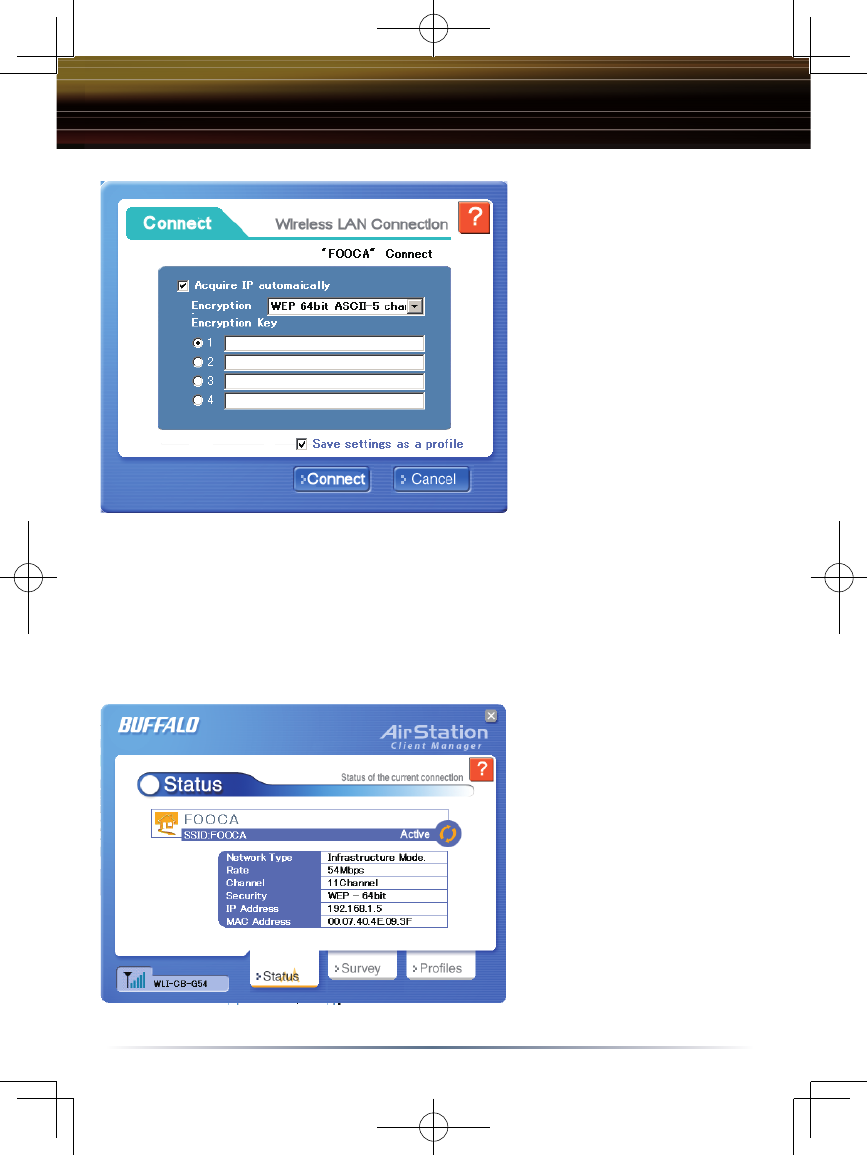
12
◗ On the Wireless LAN
Connection Screen, leave the
'acquire IP automatically'
checked unless your wireless
adapter is set with a static IP
address.
- Use the pull down menu to
select your Access Point's
security and then enter the
appropriate WEP or WPA
key(s) into the table. Select
'No Encryption' if you do not
require encryption.
■ NOTE: For more information about using WEP and WPA, please refer to the
documentation that came with your Access Point/Wireless Router
- If you would like to save these settings as a stored profile, leave the 'Save
settings as a profile' box checked.
- Click on 'Connect'
◗ The status screen will
now show details of your
connection. You many now
close the AirStation Client
Manager - you will stay
connected. At any time you
would like to change settings,
re-launch Client Manager.
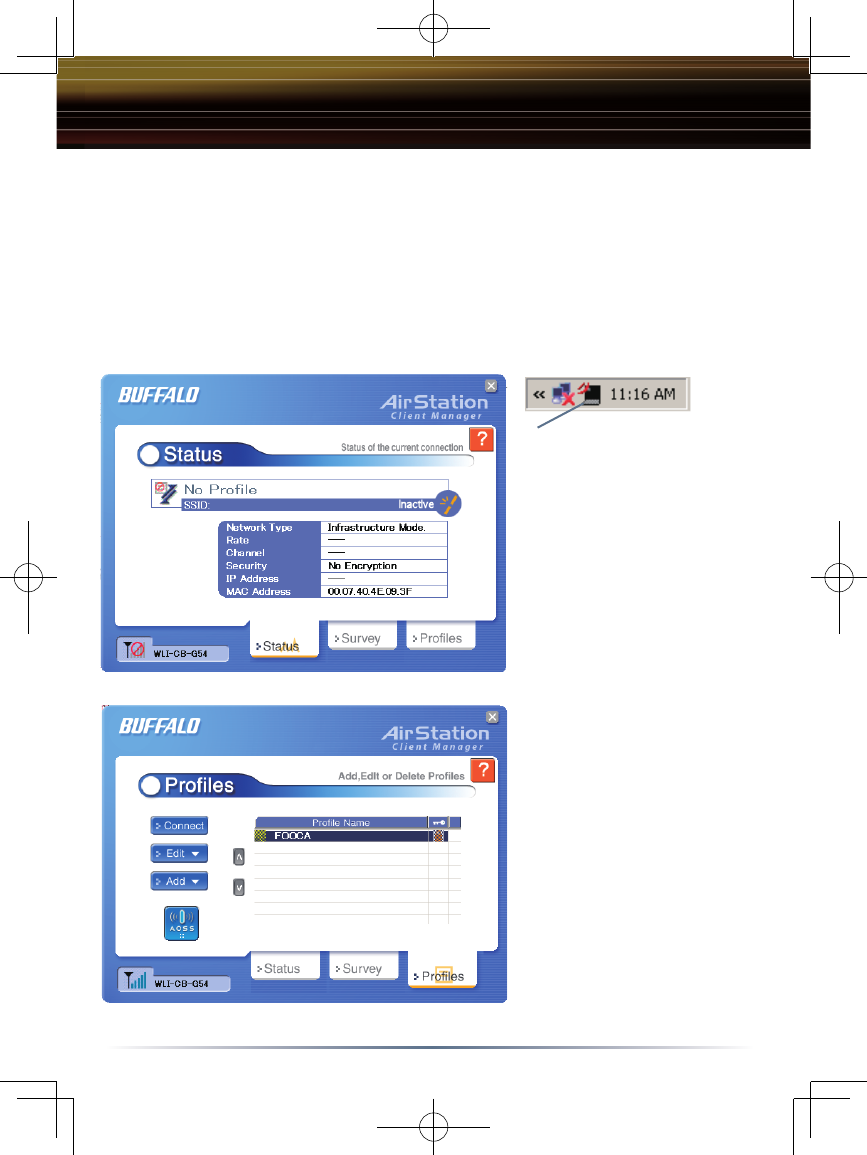
13
Buffalo AOSS Supplement:
Connecting to your Wireless LAN using AOSS
(Client Manager)
■ NOTE: AOSS (AirStation One Touch Secure System) automatically creates a
secure connection to your AOSS Access Point. You must have a Buffalo AOSS
enabled Access Point or Router to use AOSS within client manager.
◗ Access Client Manager
by right clicking on the
Icon in your System
'Tray', or by launching
Programs => Buffalo
=>AirStation Utility =>
Client Manager2.
◗ From the Main Status
Screen, Select the
'Profiles' tab.
◗ Click on the AOSS
button to initiate your
AOSS session.
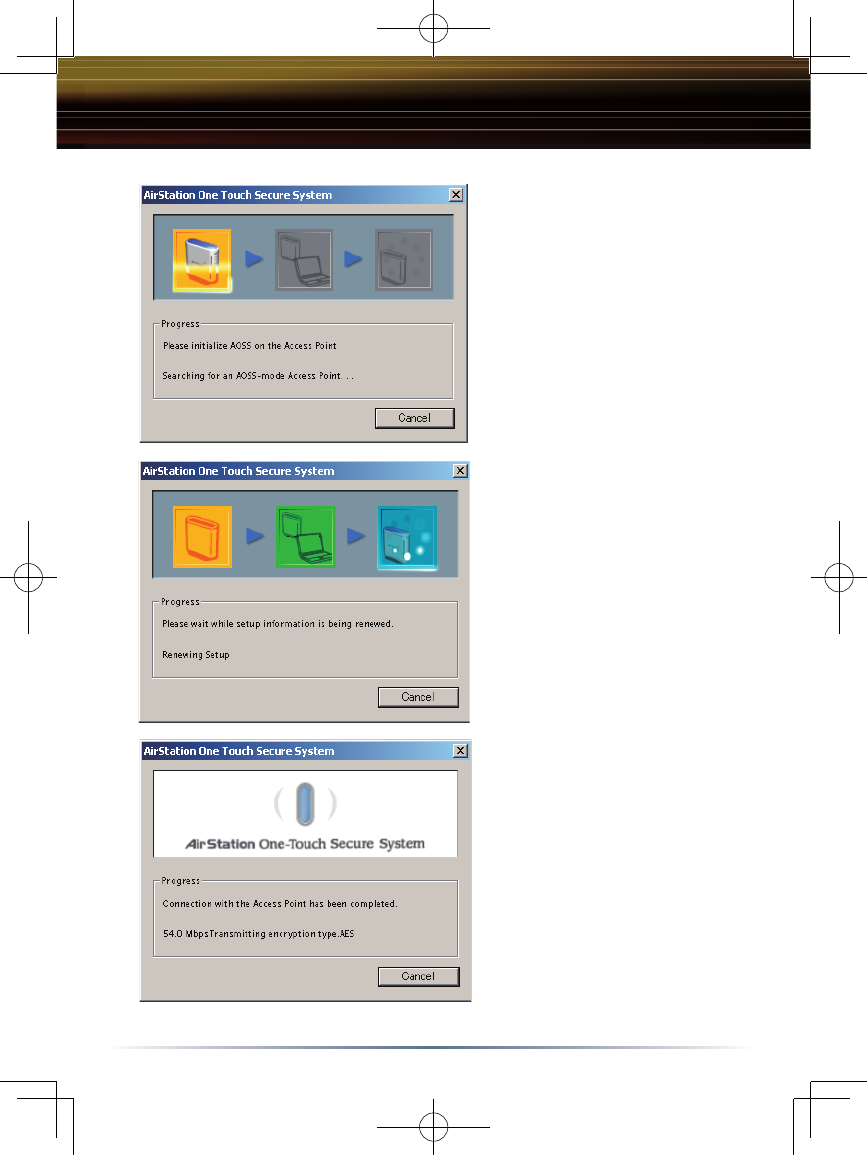
14
◗ You will receive a message
prompting you to initiate
AOSS on your Access Point
- This is typically done by
Pressing the AOSS button
on the Access Point. Do
this now if you have not
previously done so.
◗ AOSS will locate the Access
Point and automatically
configure a secure
connection, using the highest
security level available for the
two devices.
◗ A confirmation page will
appear momentarily. You
are now connected and can
close client manager without
loosing your connection. If
you wish to change settings,
relaunch Client Manger.
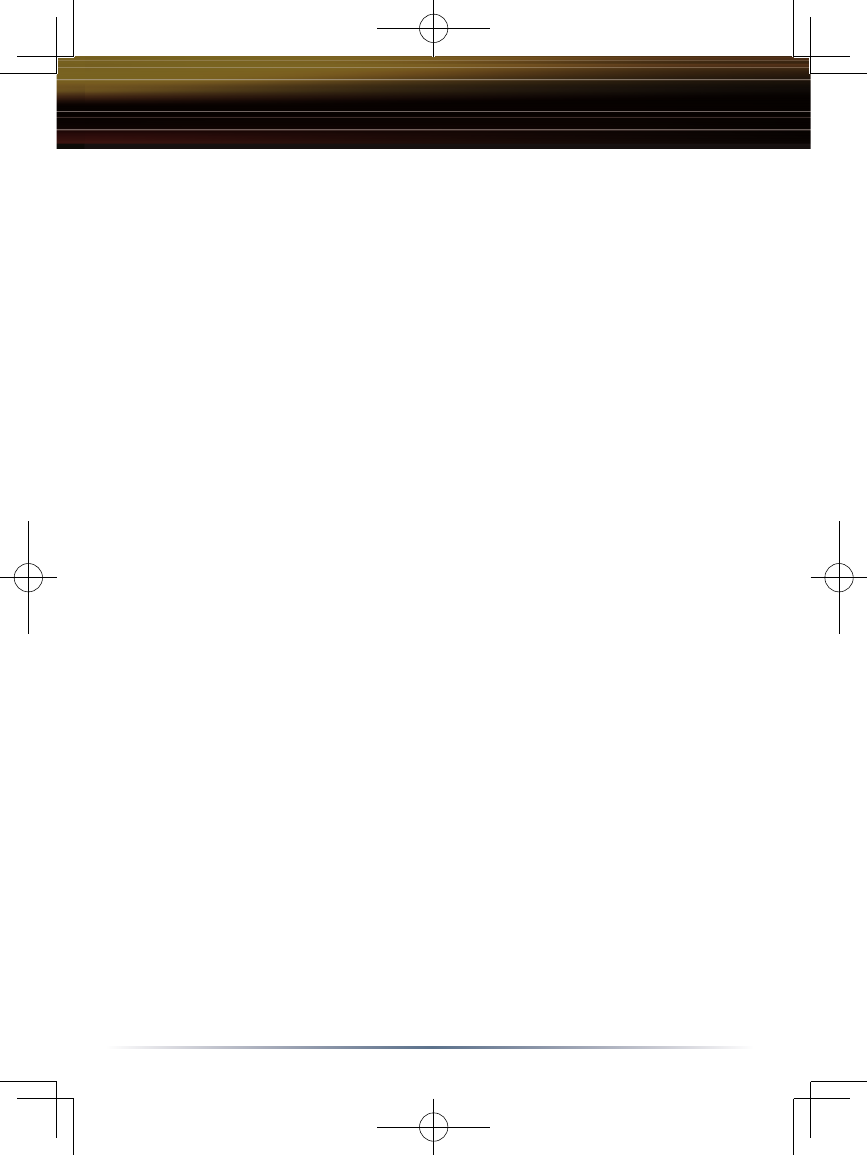
15
MEMO
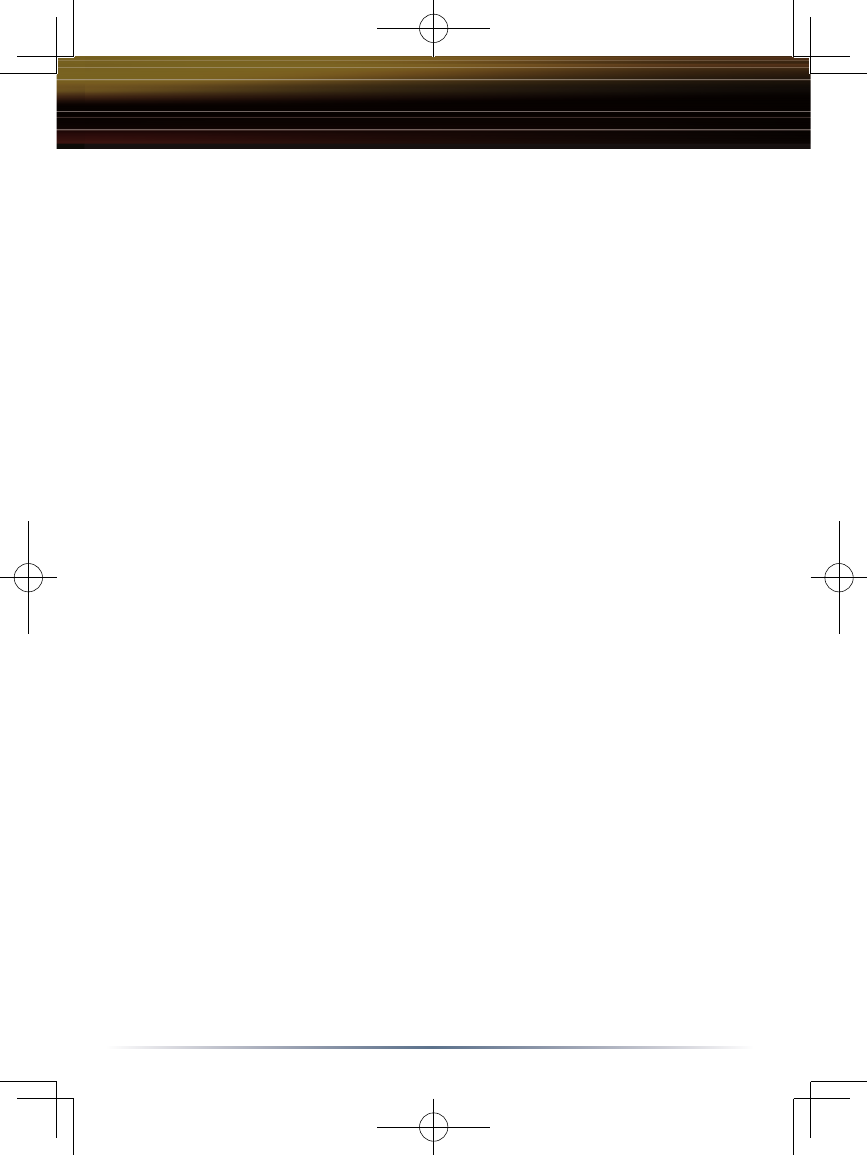
16
Buffalo Technology Technical Support
◗ Web USA http://www.buffalotech.com/wireless
EUROPE http://www.buffalo-technology.com
CHINA http://www.buffalo-china.com
TAIWAN http://www.buffalo-tech.com.tw
KOREA http://www.buffalotech.co.kr
FCC Compliance Statement - This device complies with Part 15 of the FCC
Rules. Operation is subject to the following two conditions: (1) This device may
not cause harmful interference, and (2) this device must accept any interference
received, including interference that may cause undesired operation.
R&TTE Compliance Statement - This equipment complies with all
the requirements of the DIRECTIVE 1999/5/EC OF THE EUROPEAN
PARLIAMENT AND THE COUNCIL of 9 March 1999 on radio equipment and
telecommunication terminal equipment and the mutual recognition of their
conformity (R&TTE). See the user manual for the complete statement.
Copyright © 2004 Buffalo Technology, Inc. All Rights Reserved.
Buffalo Technology (USA) Inc., is part of BUFFALO INC., the global manufacturers of IT peripherals,
including memory, networking, and multimedia products, inside many of the world's computers. All
trademarks are property of their respective owners.
Buffalo Inc. declares that WLI-USB-B11 ( FCC ID: FDI-09101793-0 ) is limited in
CH1~CH11 by specified firmware controlled in U.S.A.
Federal Communication Commission Interference Statement
This equipment has been tested and found to comply with the limits for a Class B digital device,
pursuant to Part 15 of the FCC Rules. These limits are designed to provide reasonable
protection against harmful interference in a residential installation. This equipment generates,
uses and can radiate radio frequency energy and, if not installed and used in accordance with
the instructions, may cause harmful interference to radio communications. However, there is no
guarantee that interference will not occur in a particular installation. If this equipment does cause
harmful interference to radio or television reception, which can be determined by turning the
equipment off and on, the user is encouraged to try to correct the interference by one of the
following measures:
- Reorient or relocate the receiving antenna.
- Increase the separation between the equipment and receiver.
- Connect the equipment into an outlet on a circuit different from that to which the receiver is
connected.
- Consult the dealer or an experienced radio/TV technician for help.
FCC Caution: To assure continued compliance, any changes or modifications not expressly
approved by the party responsible for compliance could void the user’s authority to operate this
equipment.
This device complies with Part 15 of the FCC Rules. Operation is subject to the following two
conditions: (1) This device may not cause harmful interference, and (2) this device must accept
any interference received, including interference that may cause undesired operation.
IMPORTANT NOTE:
FCC Radiation Exposure Statement:
This equipment complies with FCC radiation exposure limits set forth for an uncontrolled
environment. This equipment should be installed and operated with minimum distance 20cm
between the radiator & your body.
This transmitter must not be co-located or operating in conjunction with any other antenna or
transmitter.